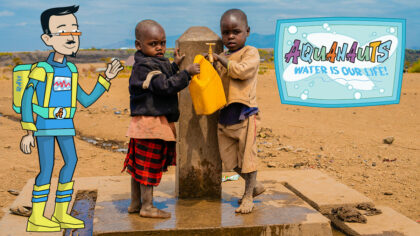Today, the class of Deep Space High is looking at Nebulae – and everyone who has remembered their space scuba kit is going nebula diving!
Nebulae are enormous clouds of gas – mostly hydrogen and helium, plus dust. They’re often very large, spanning many light years.


Stars are actually born in these old clouds of dust. The dust and gas in these clouds is squashed and spun together by gravity – a bit like candy floss at a funfair.
It gets hotter and hotter and when it reaches a certain temperature – POW! It ignites and bursts into life as a star.

That’s the Orion Nebula – one of a type called an Emission nebula – and the red coloured light it’s giving out comes from the young stars that are growing here.
The radiation from the stars supercharges the hydrogen gas until it glows – a bit like a neon sign.
A Bok Globule is a bit different to the other types of clouds we’ve been learning about.
Bok Globules are very dense. This means that there’s a lot of dust and gas close together inside the cloud. In fact, there’s so much dust and gas that it blocks out all the light behind it.

There’s just one more type of nebula to look at…
It’s a planetary nebula and these are made when a dying sun-sized star begins to shed its outer layers.
This doesn’t take very long – only about fifty thousand years and this beautiful example is less than a thousand years old, we’re lucky to be in time to see it!
If you want to find out more about space, you should check out Deep Space High!
That’s our podcast series all about it. Sam, Stats, and Quark are all taught about solar flares, cosmic rays, coronal mass ejections and more!

Deep Space High: Galaxy Gala, with support from the Royal Astronomical Society.
Add a comment







